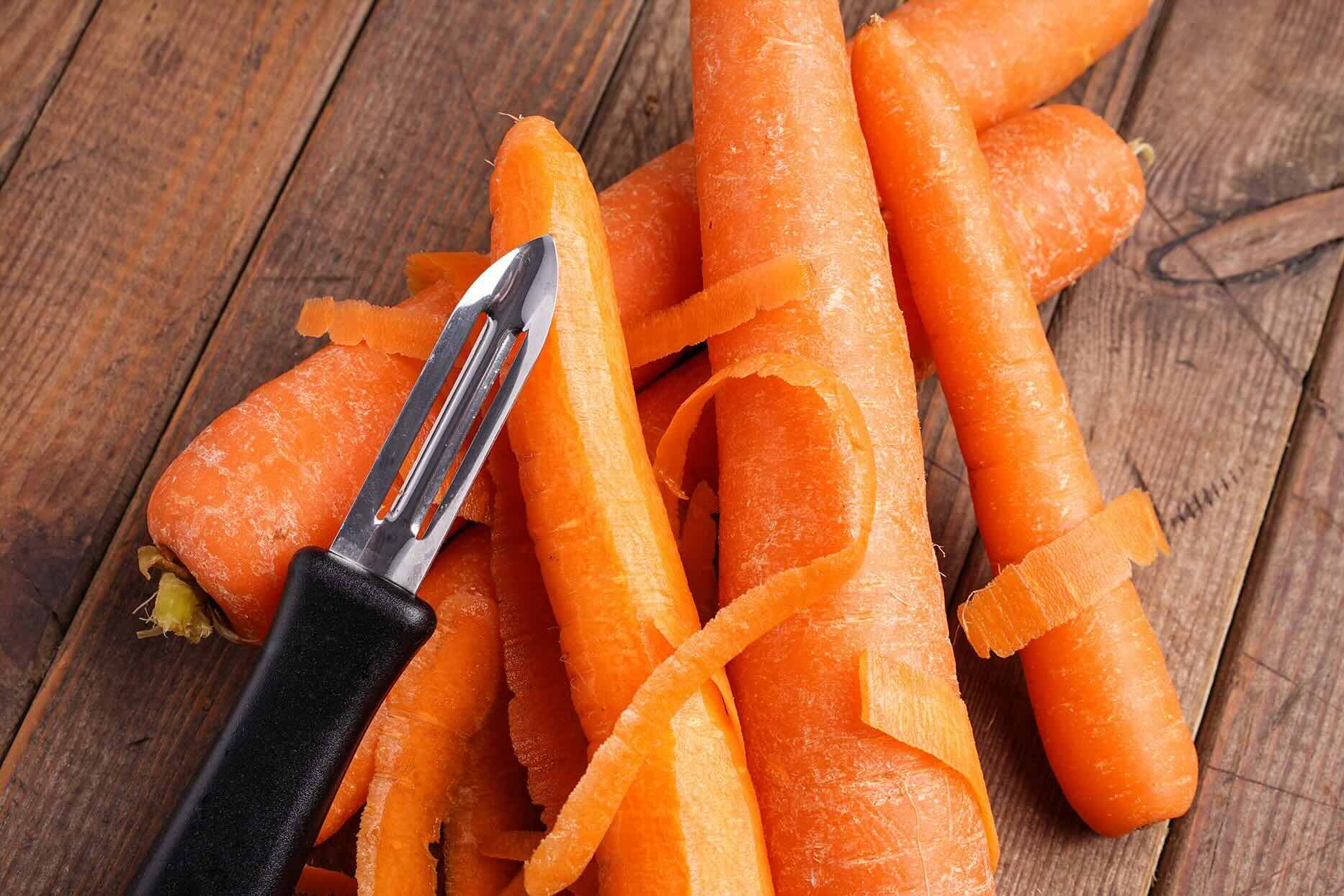

Articles
How To Store Peeled Carrots
Modified: August 27, 2024
Learn the best way to store peeled carrots and keep them fresh longer. Read our informative articles for tips and tricks on proper carrot storage.
(Many of the links in this article redirect to a specific reviewed product. Your purchase of these products through affiliate links helps to generate commission for Storables.com, at no extra cost. Learn more)
Introduction
Carrots are not only a versatile and nutritious vegetable, but they are also a popular ingredient in many dishes. Whether you have a surplus of carrots from your garden or you simply bought a large bag from the grocery store, knowing how to properly store peeled carrots is essential to prevent spoilage and retain their freshness.
When it comes to storing peeled carrots, there are a few key factors to consider, such as the choice of container, the preparation process, the storage temperature, and the role of moisture. By understanding these factors, you can ensure that your peeled carrots stay fresh and crisp for longer periods, allowing you to enjoy their natural sweetness and health benefits.
In this article, we will guide you through the steps on how to store peeled carrots so that you can keep them fresh and prolong their shelf life. Whether you plan to store them in the refrigerator, freeze them for future use, or try alternative methods, we have you covered with the best tips and tricks.
So, let’s dive into the details and learn how to properly store peeled carrots to make the most out of this delicious and versatile vegetable.
Key Takeaways:
- Properly storing peeled carrots is essential for maintaining their freshness and flavor. Consider factors like container choice, preparation, temperature, and moisture to extend shelf life and minimize waste.
- Get creative with reusing carrot scraps to reduce food waste. From making broth to creating crispy chips, explore various ways to maximize the use of this versatile vegetable.
Read more: How To Store Carrots
Choosing the Right Container
When it comes to storing peeled carrots, choosing the right container is crucial to maintain their freshness and prevent them from drying out or spoiling. The ideal container should be airtight and provide sufficient space for the carrots without overcrowding them.
Glass or plastic containers with tightly fitting lids are great options for storing peeled carrots. Make sure the container is clean and dry before placing the carrots inside. Avoid using containers that have had strong-smelling or pungent foods stored in them, as the carrots can absorb those odors.
If you don’t have a suitable container with an airtight lid, you can also use resealable plastic bags. Just ensure that all the excess air is squeezed out before sealing the bag to prevent moisture loss.
In addition to choosing the right container, consider the size as well. It’s best to store peeled carrots in small batches, so you can easily grab the desired amount without exposing the rest to air and moisture. This will help maintain the quality of the carrots and extend their shelf life.
By selecting the appropriate container for storing peeled carrots, you can create an optimal environment that minimizes moisture loss and keeps the carrots fresh and crisp for a longer period.
Preparing the Carrots
Before storing peeled carrots, it is important to properly prepare them to ensure their longevity and prevent them from drying out or spoiling. Here are some steps to follow when preparing your carrots for storage:
- Wash and peel: Begin by washing the carrots thoroughly under cold running water to remove any dirt or debris. Once clean, use a vegetable peeler to remove the outer skin. Make sure to remove any blemishes or damaged spots as well.
- Cut or slice (optional): Depending on your preference and intended use, you may choose to cut or slice the carrots. If you plan to use them in soups, stews, or stir-fries, it’s a good idea to cut them into desired shapes or slice them into rounds. However, if you’re storing them for snacking or adding to salads, you can leave them whole.
- Drain excess moisture: After washing and peeling, pat the carrots dry with a clean kitchen towel or paper towels to remove any excess moisture. Excess moisture can accelerate spoilage, so it’s important to ensure the carrots are as dry as possible before storing.
Once the carrots are properly prepared, you can proceed with storing them using the recommended methods for optimal freshness and shelf life.
Remember to handle the carrots with care to avoid bruising or damaging them, as this can lead to quicker spoilage. By following these preparation steps, you can set the stage for successfully storing your peeled carrots.
Proper Storage Temperature
The storage temperature plays a crucial role in preserving the freshness and quality of peeled carrots. Carrots are best stored at a cool and consistent temperature to slow down the growth of bacteria and prevent them from becoming soft or rubbery.
The ideal storage temperature for peeled carrots is between 32°F (0°C) and 40°F (4°C). Keeping them at this temperature range helps maintain their crispness and extends their shelf life.
If you store your carrots in the refrigerator, make sure to place them in the crisper drawer, away from other ethylene-producing fruits and vegetables. Ethylene is a natural gas produced by certain produce items that can cause accelerated ripening and spoilage of carrots.
Avoid storing peeled carrots near strong-smelling foods, as they can absorb odors easily. Keep them separate from items like onions or garlic to maintain their original taste and flavor.
If you don’t have access to a refrigerator, you can store peeled carrots in a cool and dark place, such as a cellar, basement, or pantry. Just make sure the location remains within the recommended temperature range and is well-ventilated to prevent moisture buildup.
By storing peeled carrots at the proper temperature, you can significantly prolong their freshness and enjoy them at their best flavor and texture.
The Role of Moisture
Moisture is a key factor to consider when storing peeled carrots, as it can greatly impact their quality and shelf life. Finding the right balance of moisture is essential to prevent them from drying out or becoming too damp, which can lead to mold or rot. Understanding the role of moisture will help you store peeled carrots effectively.
Too much moisture can cause the carrots to become soft and mushy. On the other hand, too little moisture can result in dehydration and loss of crispness. To maintain the proper moisture level, follow these tips:
- Avoid washing before storage: While it’s important to wash carrots before peeling and consuming them, try to avoid washing them right before storage. Water can contribute to the growth of bacteria and accelerate spoilage. Instead, wash and dry the carrots thoroughly after peeling and before storing.
- Blanching for freezing: If you plan to freeze peeled carrots, blanching them in boiling water for a short period can help preserve their texture and color. After blanching, cool them down quickly in an ice bath and pat them dry before freezing to minimize excess moisture.
- Remove excess moisture: Before storing peeled carrots, make sure to remove any excess moisture using a clean kitchen towel or paper towels. Drying them thoroughly helps prevent the growth of bacteria and prolongs their shelf life.
- Consider using damp paper towels: As an alternative method, you can store peeled carrots wrapped in damp paper towels to maintain moisture levels. However, be careful not to make them too wet, as excessive moisture can lead to spoilage.
By being mindful of moisture levels and taking appropriate steps to control it, you can ensure that your peeled carrots stay fresh, crisp, and free from spoilage.
Read more: How To Store Carrots In Sand
Storing Peeled Carrots in the Fridge
One of the most common methods of storing peeled carrots is in the refrigerator. With the right storage technique, you can keep your peeled carrots fresh and crispy for an extended period. Here’s how to store them in the fridge:
- Place in an airtight container: Transfer the peeled carrots to a clean, airtight container, or resealable plastic bag. Make sure the container is suitable for fridge storage and has a tight-fitting lid or is properly sealed to prevent air and moisture from entering.
- Label and date: It’s a good practice to label the container with the date of storage. This will help you keep track of how long the carrots have been stored.
- Store in the crisper drawer: The crisper drawer in your refrigerator is designed to maintain a controlled humidity level, making it an ideal spot for storing peeled carrots. Place the container in the crisper drawer to keep the carrots cool and protect them from excessive moisture.
- Keep away from ethylene-producing items: Store the peeled carrots separately from fruits and vegetables that produce ethylene gas. Ethylene can accelerate the ripening process and lead to premature spoilage. Carrots are sensitive to ethylene, so keep them away from items like apples, bananas, and avocados.
- Check periodically: Periodically check the condition of the peeled carrots in the fridge. Remove any carrots that show signs of spoilage, such as mold or a foul odor, to prevent the entire batch from getting affected.
By following these guidelines, you can ensure that your peeled carrots stay fresh and maintain their texture and flavor for up to a week in the refrigerator. This gives you the flexibility to use them in various recipes or enjoy them as a healthy snack.
Store peeled carrots in a sealed plastic bag with a paper towel to absorb excess moisture. Keep them in the crisper drawer of the refrigerator for up to two weeks.
Freezing Peeled Carrots
If you have a surplus of peeled carrots or want to preserve them for future use, freezing is an excellent option. Freezing peeled carrots allows you to extend their shelf life for several months while retaining their nutritional value and texture. Here’s a step-by-step guide on how to freeze peeled carrots:
- Blanch the carrots: Blanching is an essential step before freezing, as it helps preserve the color, texture, and flavor of the carrots. Start by bringing a pot of water to a boil and blanch the peeled carrots for 2-3 minutes. This process helps deactivate enzymes that can cause loss of quality during freezing.
- Cool in an ice bath: Immediately transfer the blanched carrots to an ice bath to halt the cooking process and cool them rapidly. This step helps maintain the crispness of the carrots.
- Pat dry: After the carrots have cooled down, remove them from the ice bath and gently pat them dry with a kitchen towel or paper towels. Removing excess moisture is crucial to prevent ice crystals from forming during freezing.
- Portion and package: Divide the peeled carrots into desired portion sizes to make it easier to thaw only what you need. You can place them in freezer-safe bags or airtight containers. Make sure to squeeze out as much air as possible before sealing to prevent freezer burn.
- Label and date: Label the bags or containers with the date of freezing. This helps to keep track of their storage time and ensures you use the oldest carrots first.
- Freeze: Place the packaged peeled carrots in the freezer and arrange them in a single layer if possible. This allows for quicker freezing and easier thawing later on.
When properly frozen, peeled carrots can retain their quality for up to 12 months. However, for the best taste and texture, it is recommended to consume them within 8-10 months of freezing.
Remember, freezing can slightly alter the texture of the carrots, making them softer. This makes them better suited for cooked dishes rather than raw applications like salads or snacking. Consider the intended use when thawing the frozen carrots.
With the convenience of frozen peeled carrots, you can easily add them to soups, stews, casseroles, and stir-fries whenever you need a quick and nutritious addition to your meals.
Storing Peeled Carrots in Water
Another method you can try for storing peeled carrots is keeping them submerged in water. Storing peeled carrots in water helps to maintain their freshness and crispness while preventing them from drying out. Here’s how you can store peeled carrots in water:
- Choose the right container: Select a clean, airtight container big enough to hold the peeled carrots and water. A glass jar or plastic container with a tight-fitting lid works well for this method.
- Wash and peel the carrots: Start by washing the carrots thoroughly to remove any dirt or debris. Then, use a vegetable peeler to remove the outer skin.
- Cut or slice (optional): Depending on your preference, you can cut the carrots into desired shapes or leave them whole.
- Place in the container: Put the peeled and cut carrots into the container and fill it with enough water to completely submerge the carrots. Ensure the water covers all the carrots to prevent air exposure.
- Seal and refrigerate: Securely seal the container with the lid and place it in the refrigerator. The low temperature will help maintain the carrots’ freshness while they stay submerged in water.
- Change the water: Every 3-4 days, remove the carrots from the container, discard the old water, and refill it with fresh cold water. This prevents any build-up of bacteria and maintains the carrots’ quality.
- Check for signs of spoilage: During storage, occasionally inspect the carrots for any signs of spoilage, such as a slimy texture or a foul smell. If you notice any indications of spoilage, discard the affected carrots and refresh the water.
By storing peeled carrots in water, you can maintain their crispness and prevent them from drying out. This method works best for short-term storage, and the carrots can be kept in water for up to a week.
Remember to change the water regularly to ensure the carrots stay fresh and free from bacterial growth. It’s also advisable to check the carrots periodically to ensure they remain in good condition.
With this method, you’ll have conveniently stored peeled carrots ready to use in various recipes or as a quick and healthy snack.
Extending Shelf Life with Vinegar
Using vinegar is a simple yet effective method to extend the shelf life of peeled carrots. Vinegar’s acidic nature helps inhibit the growth of bacteria and fungi, keeping the carrots fresh and crisp for a longer period. Here’s how you can use vinegar to store peeled carrots:
- Wash and peel the carrots: Start by thoroughly washing the carrots to remove any dirt or debris. Then, use a vegetable peeler to remove the outer skin.
- Cut or slice (optional): Depending on your preference and intended use, you may choose to cut the carrots into desired shapes or leave them whole.
- Prepare the vinegar solution: In a bowl or container, combine equal parts of water and white vinegar. The amount of solution will depend on the quantity of carrots you have.
- Submerge the carrots in the solution: Place the peeled and cut carrots into the vinegar solution, ensuring they are completely covered. The vinegar solution will help prevent bacterial growth and maintain their freshness.
- Seal and refrigerate: Cover the bowl or container with a lid or plastic wrap to create an airtight seal. Then, store it in the refrigerator to maintain the carrots’ crispness and prolong their shelf life.
- Change the vinegar solution: Every 4-5 days, discard the old vinegar solution and prepare a fresh one. This will ensure maximum preservation and prevent any unwanted flavors from developing.
- Inspect for spoilage: Regularly check the carrots for any signs of spoilage, such as mold, sliminess, or an off odor. If you notice any indications of spoilage, discard the affected carrots immediately.
By using vinegar, you can extend the shelf life of peeled carrots by several weeks. The vinegar solution helps inhibit bacterial growth and maintains the carrots’ quality and texture.
Keep in mind that the vinegar solution may slightly alter the taste of the carrots. Therefore, when using vinegar-preserved carrots in recipes, it’s recommended to rinse them thoroughly before incorporating them.
With this method, you can enjoy preserved peeled carrots for a longer period and have them readily available for salads, slaws, snacks, or other culinary creations.
Read more: How To Store Peeled Apples
Reusing Carrot Scraps
When peeling or cutting carrots, there are often scraps and leftover pieces that might seem destined for the trash. However, those carrot scraps can be surprisingly versatile and useful in various ways. Instead of wasting them, consider these ideas for reusing carrot scraps:
- Carrot broth: Collect carrot peels and scraps in a pot and cover them with water. Simmer for about an hour, then strain the liquid to make a flavorful carrot broth. This broth can be used as a base for soups, stews, or even as a cooking liquid for grains like rice or quinoa.
- Compost: If you have a compost pile or bin, carrot scraps are a valuable addition. Their organic matter will break down and enrich the compost, providing nutrient-rich soil for your garden.
- Crispy carrot chips: Instead of discarding carrot peels, spread them out on a baking sheet, drizzle with olive oil, sprinkle with salt or your favorite seasonings, and bake them at a low temperature until crispy. These carrot chips make for a delicious and healthy snack.
- Cooking base: Save carrot scraps and include them in homemade vegetable stock or broth. They add depth and flavor to the base and make it more nutritious.
- Infused vinegar: Toss carrot peels into a jar filled with white vinegar and let it sit for a few weeks. The vinegar will absorb the carrot flavor, creating a unique infusion that can be used in salad dressings or marinades.
- Create purees or sauces: Cook carrot scraps until tender, then blend them into a smooth puree. You can use this puree as a base for sauces, soups, or even as a colorful addition to mashed potatoes.
- Feed your pets or farm animals: If you have pets or farm animals, they may enjoy nibbling on carrot scraps. Just ensure that the scraps are free from any harmful seasonings or additives.
By reusing carrot scraps, you not only reduce food waste but also explore new flavors and possibilities. Get creative with how you incorporate these scraps into your meals or make use of them in other practical ways.
Remember to thoroughly wash carrot scraps before using them in any recipe or application. This ensures that they are clean and safe for consumption or other uses.
Conclusion
Knowing how to properly store peeled carrots is essential to maintain their freshness, flavor, and nutritional value. By following the right methods, you can extend the shelf life of peeled carrots and minimize food waste. Whether you choose to store them in the fridge, freeze them, keep them submerged in water, or utilize vinegar, there are various options available to suit your needs.
When storing peeled carrots, remember to choose the right container, prepare them properly, and consider factors like temperature, moisture, and ethylene sensitivity. Each of these factors plays a crucial role in keeping the carrots fresh and crisp.
If you have leftovers or scraps, don’t forget to explore creative ways to reuse them. Whether it’s making carrot broth, creating crispy carrot chips, or infusing vinegar, there are numerous ways to utilize every part of the carrot.
By implementing these storage techniques and reusing carrot scraps, you can reduce food waste, save money, and make the most out of this versatile and nutritious vegetable.
So, the next time you find yourself with a surplus of peeled carrots or want to keep them fresh for longer, refer back to this comprehensive guide to ensure you store them properly and enjoy their deliciousness in various recipes.
Remember, the goal is to maximize the freshness and flavor of your carrots while minimizing waste, allowing you to savor their natural sweetness and reap their health benefits whenever you desire.
Frequently Asked Questions about How To Store Peeled Carrots
Was this page helpful?
At Storables.com, we guarantee accurate and reliable information. Our content, validated by Expert Board Contributors, is crafted following stringent Editorial Policies. We're committed to providing you with well-researched, expert-backed insights for all your informational needs.
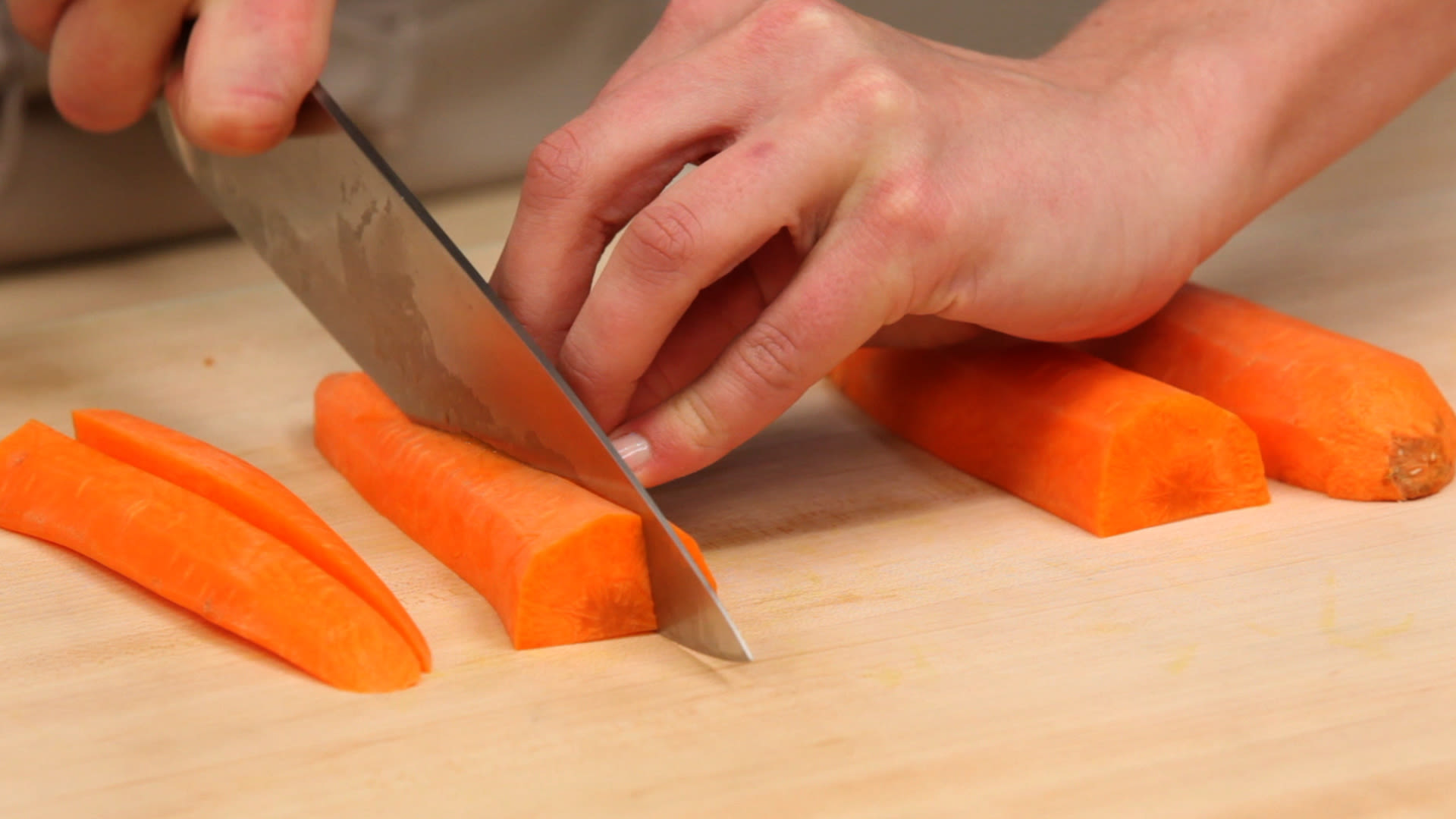
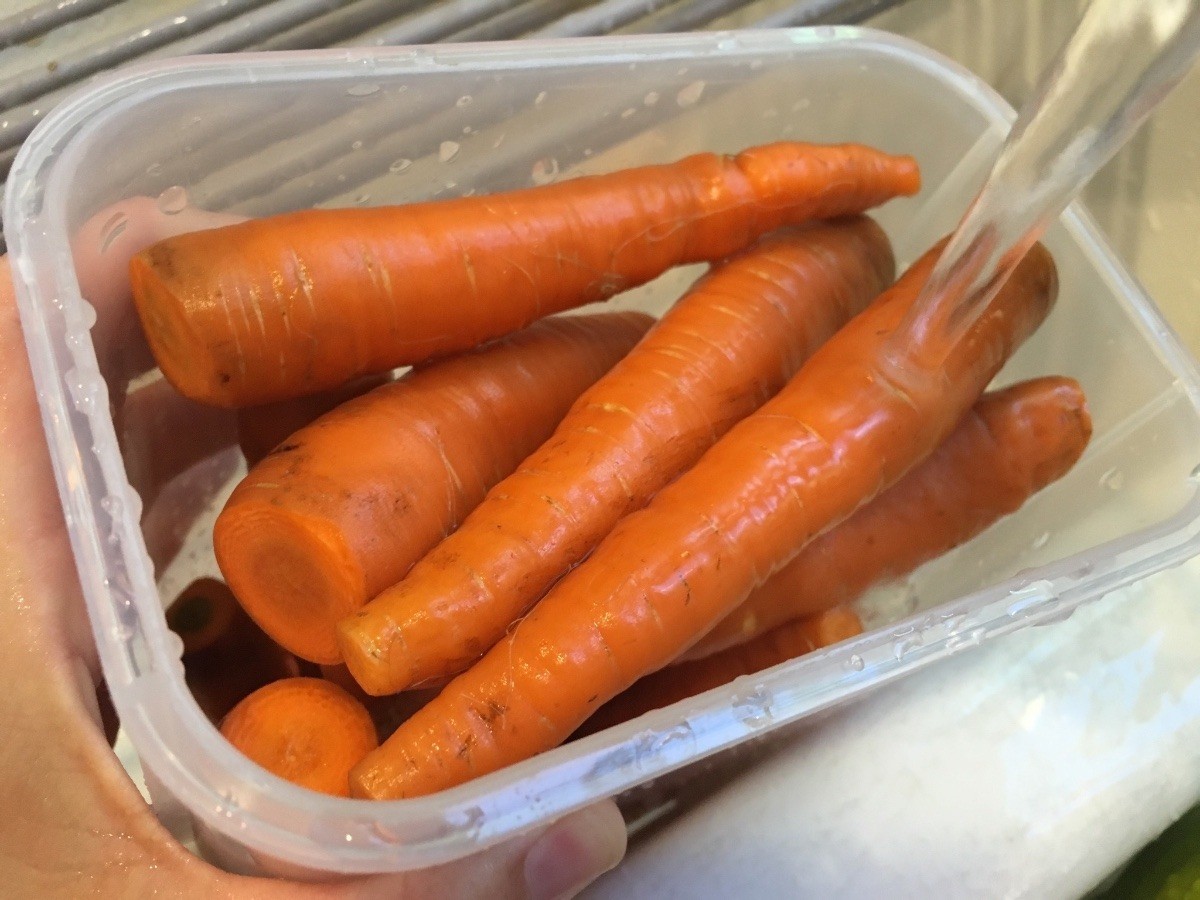
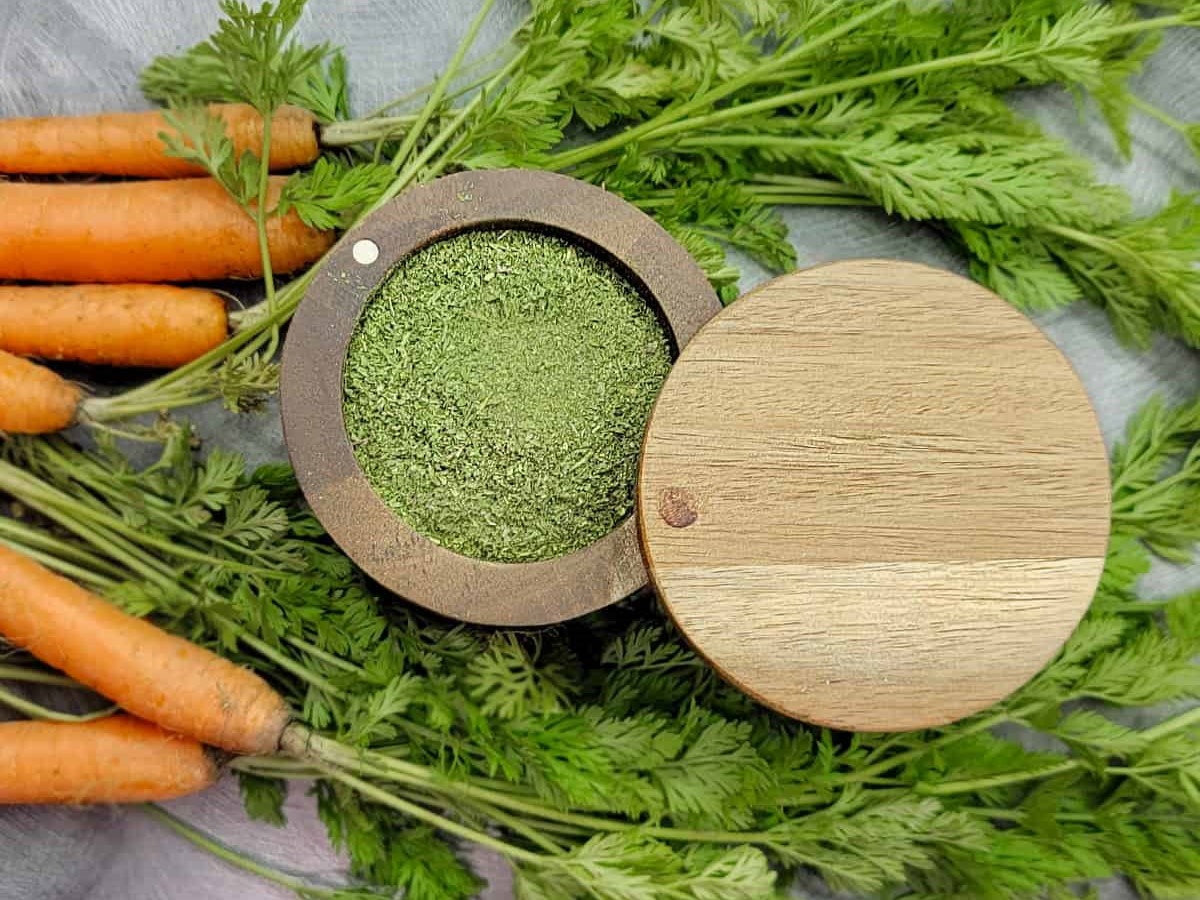
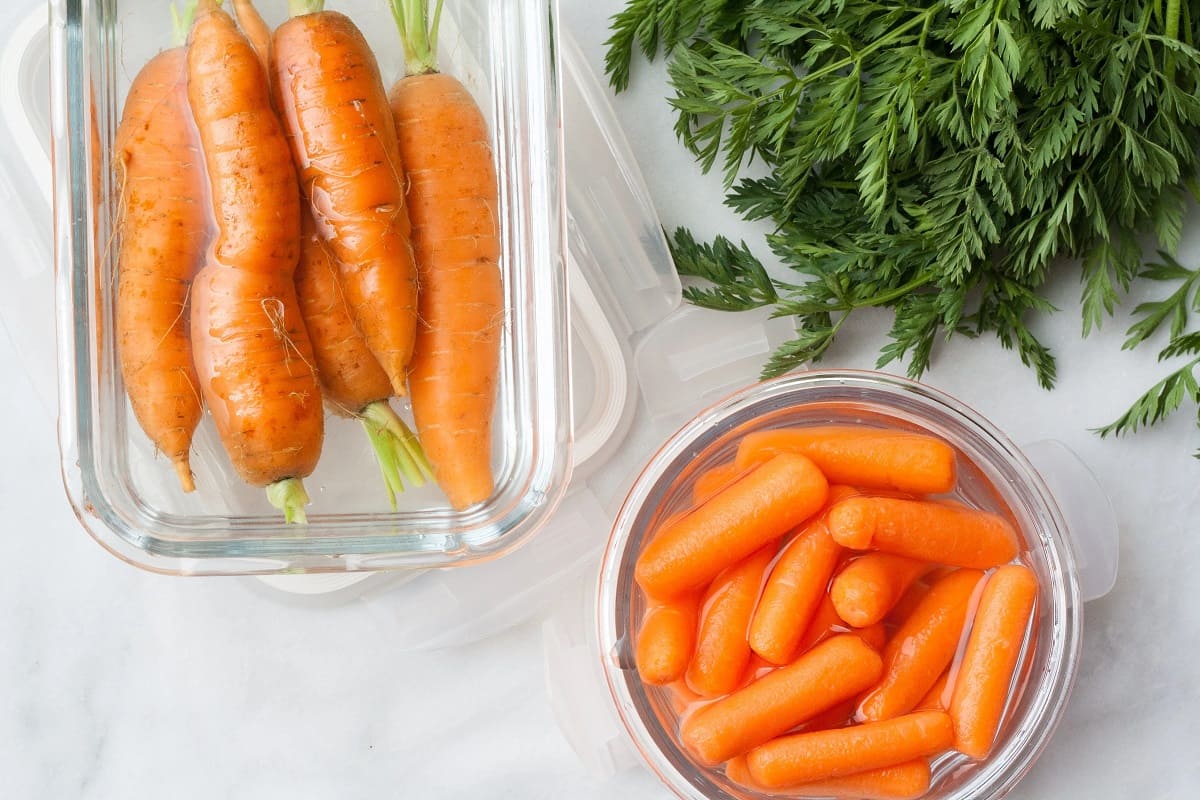
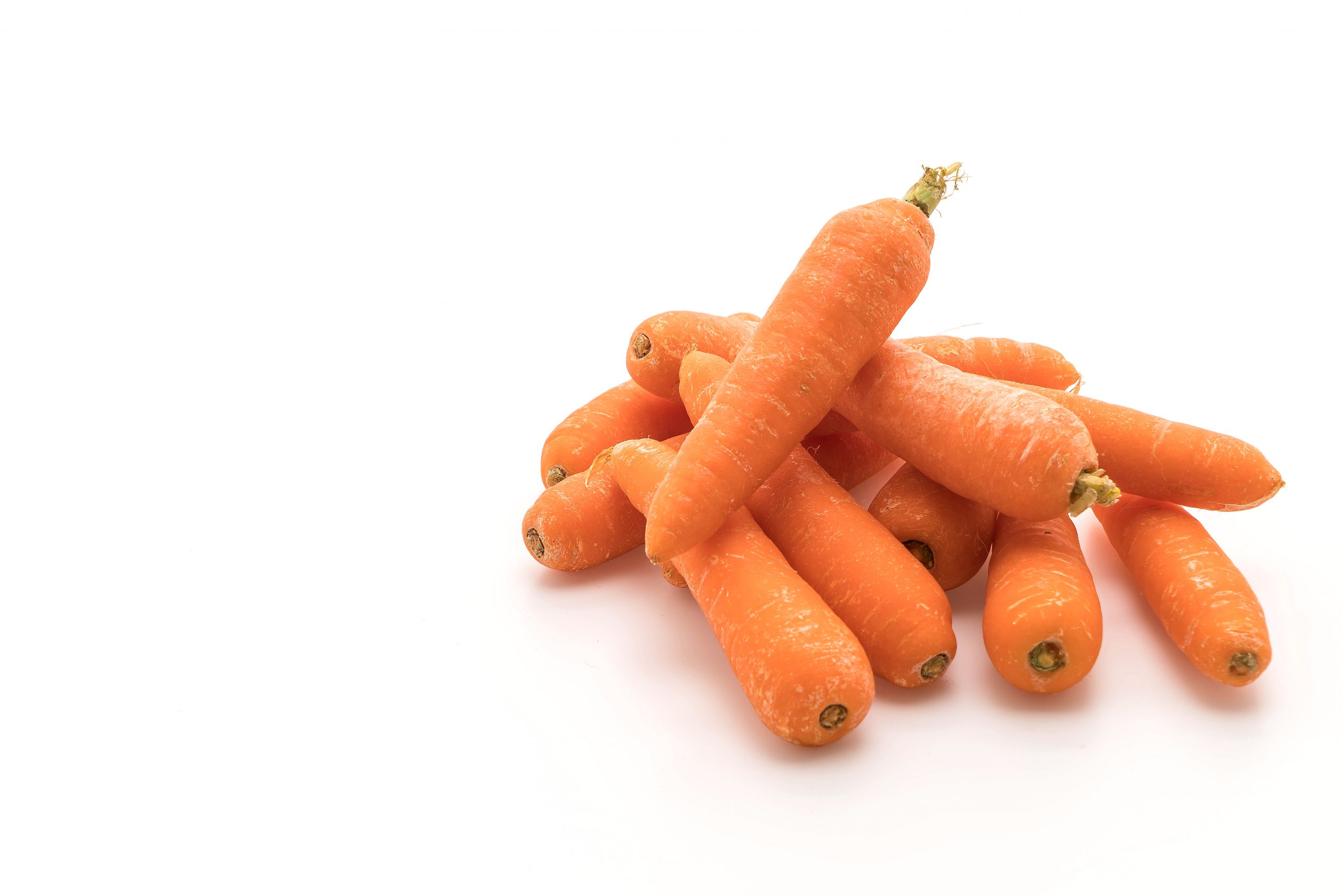
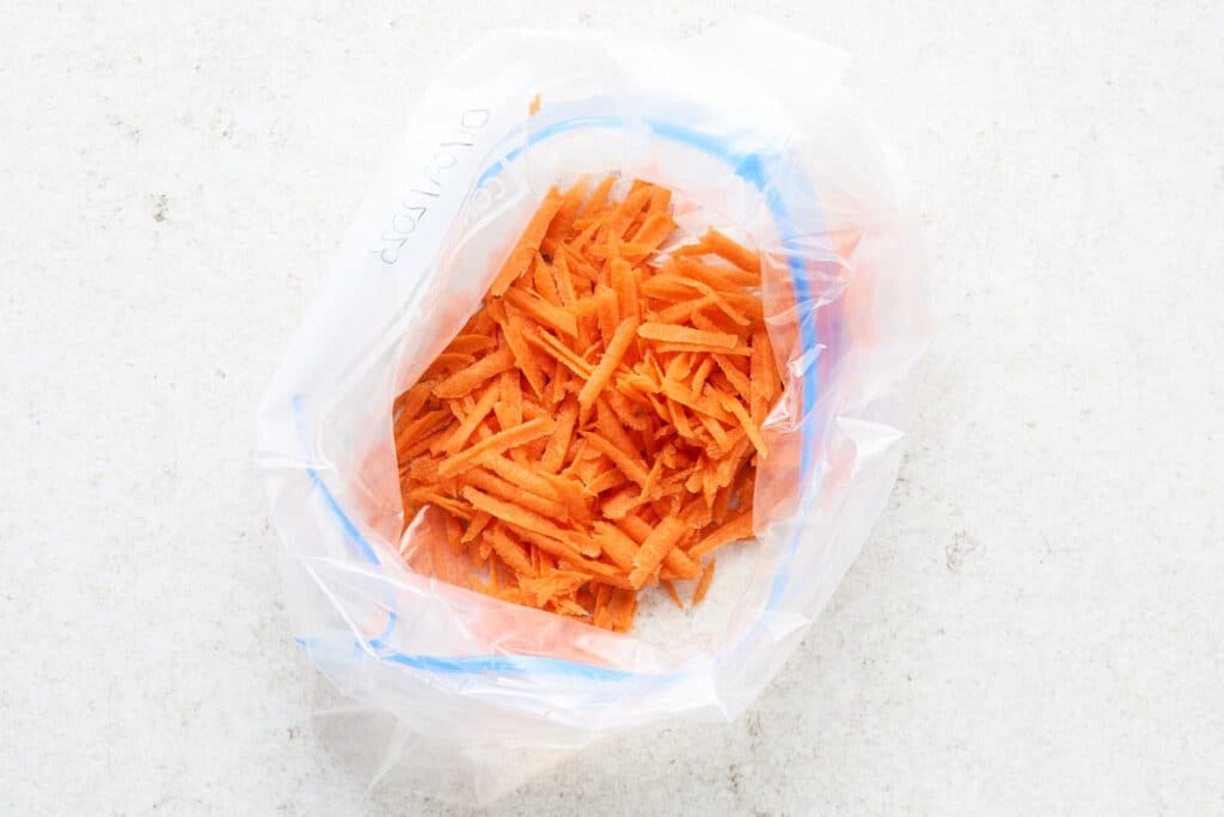
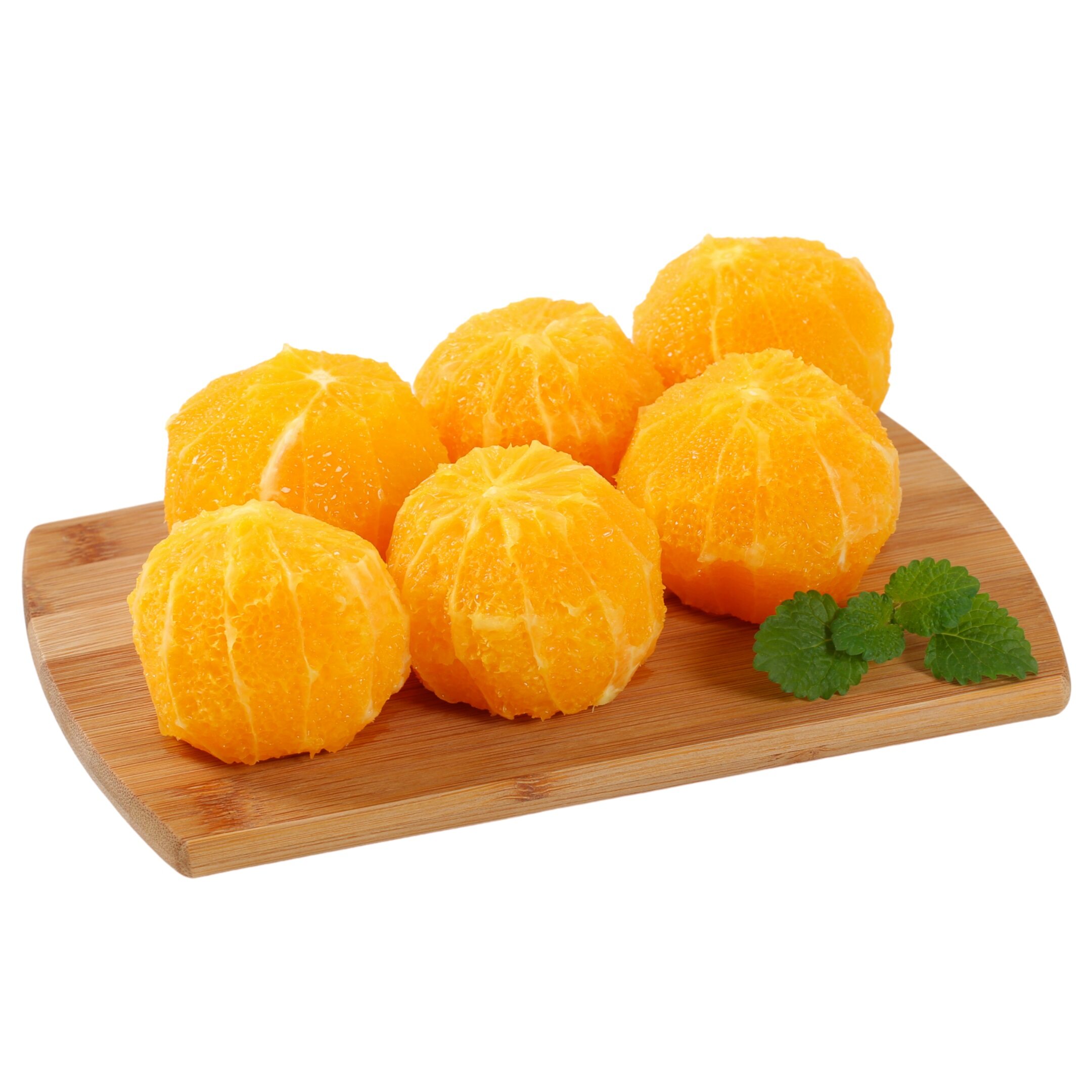

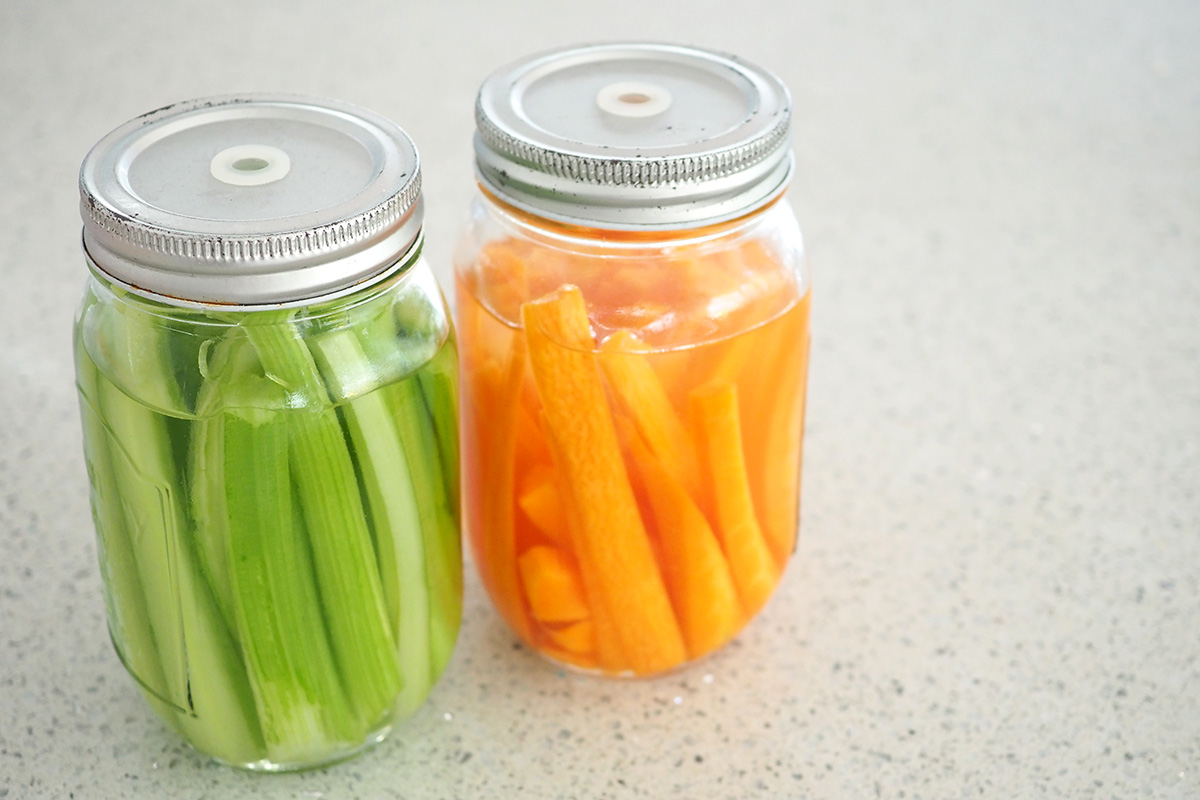
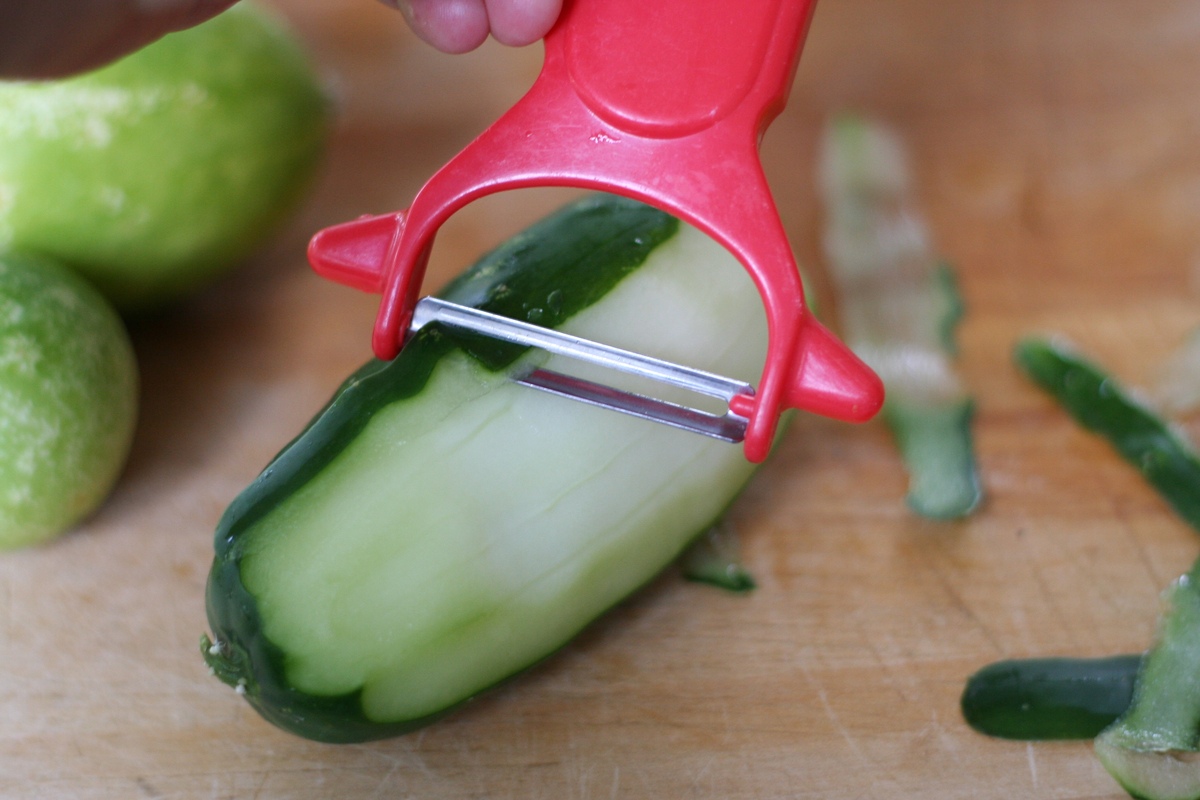

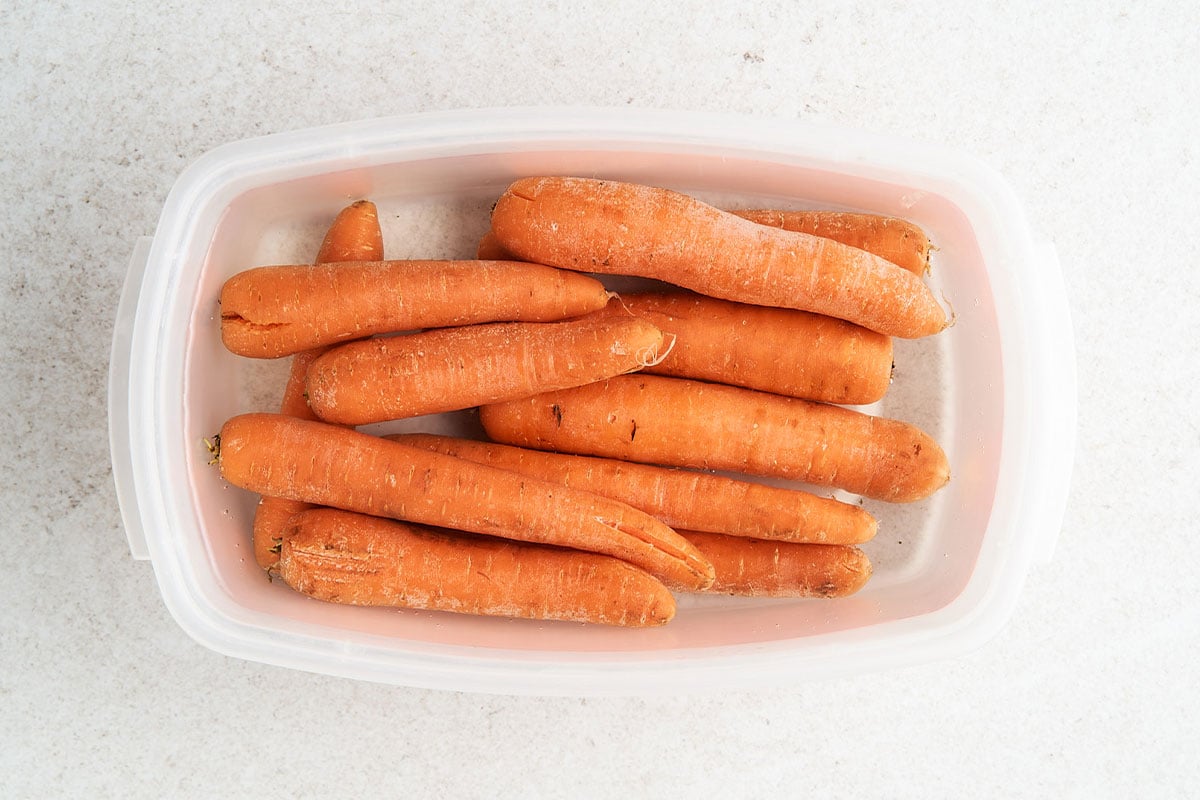
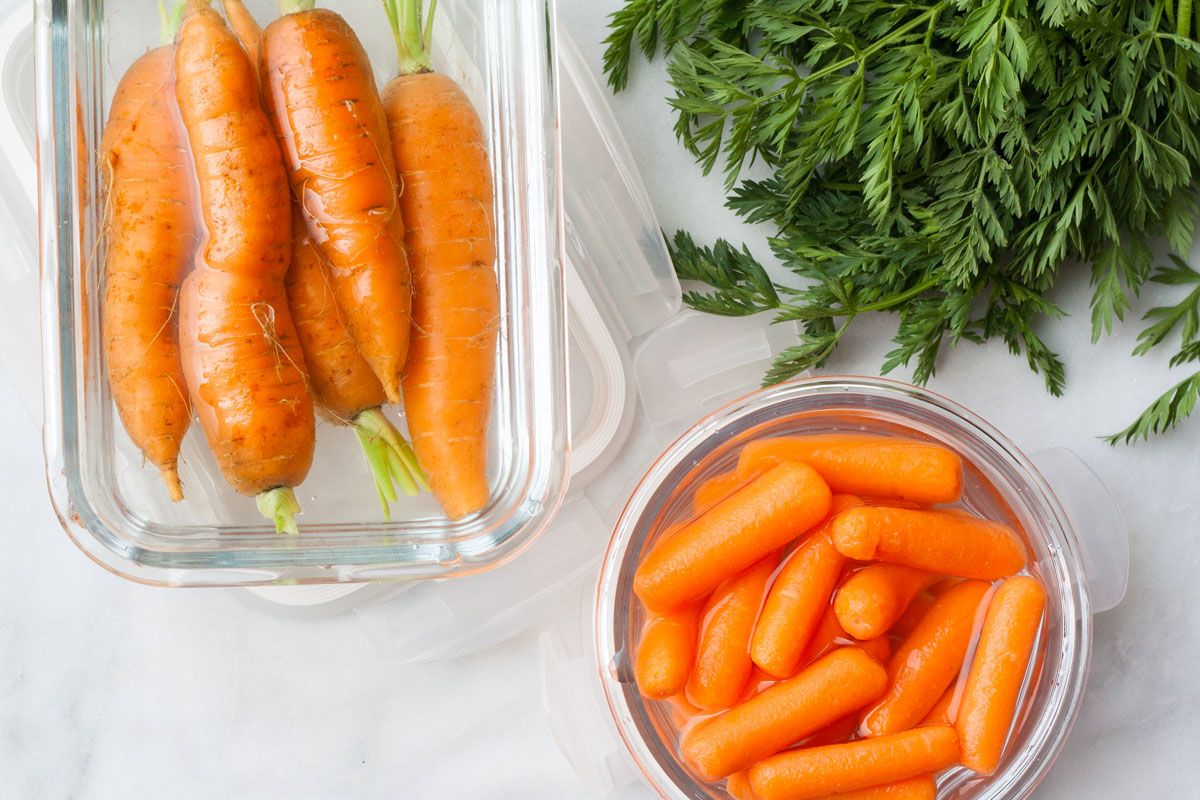

0 thoughts on “How To Store Peeled Carrots”